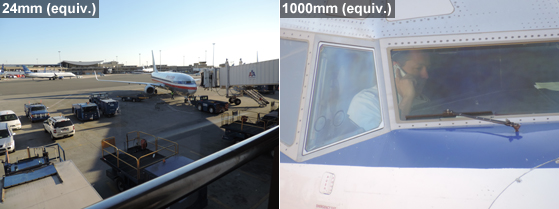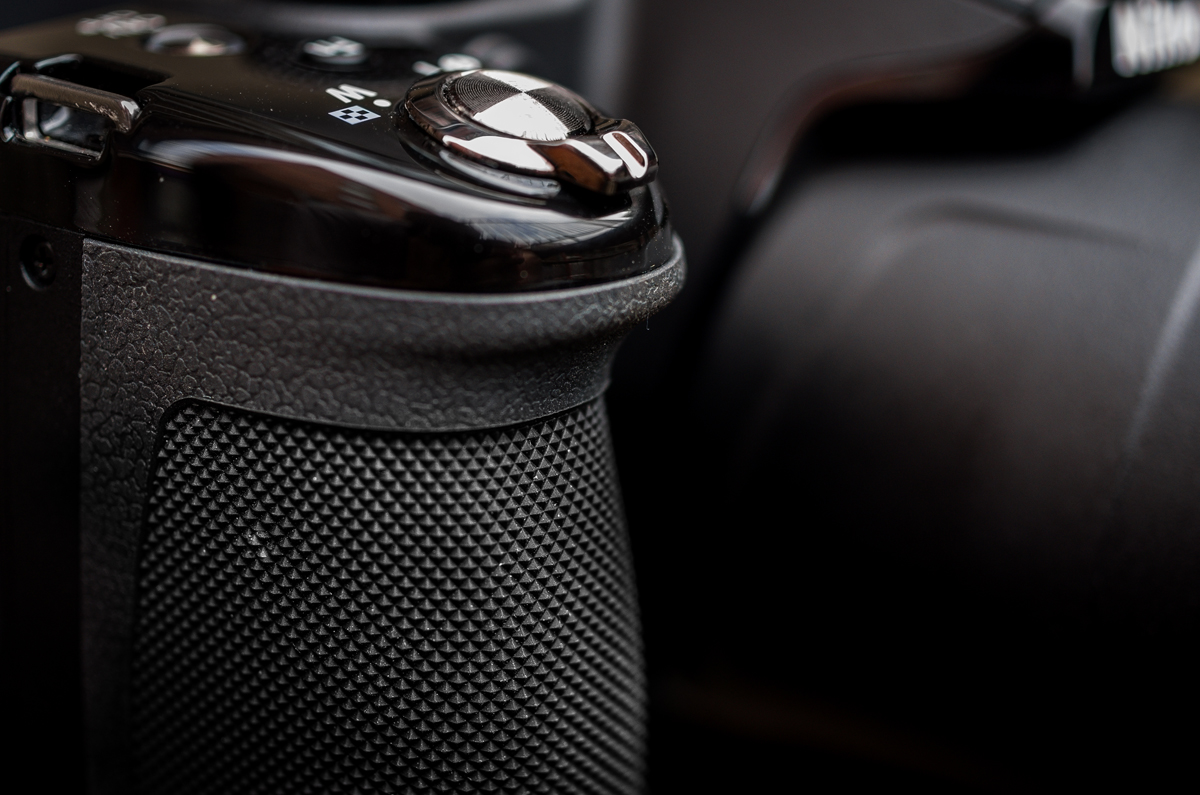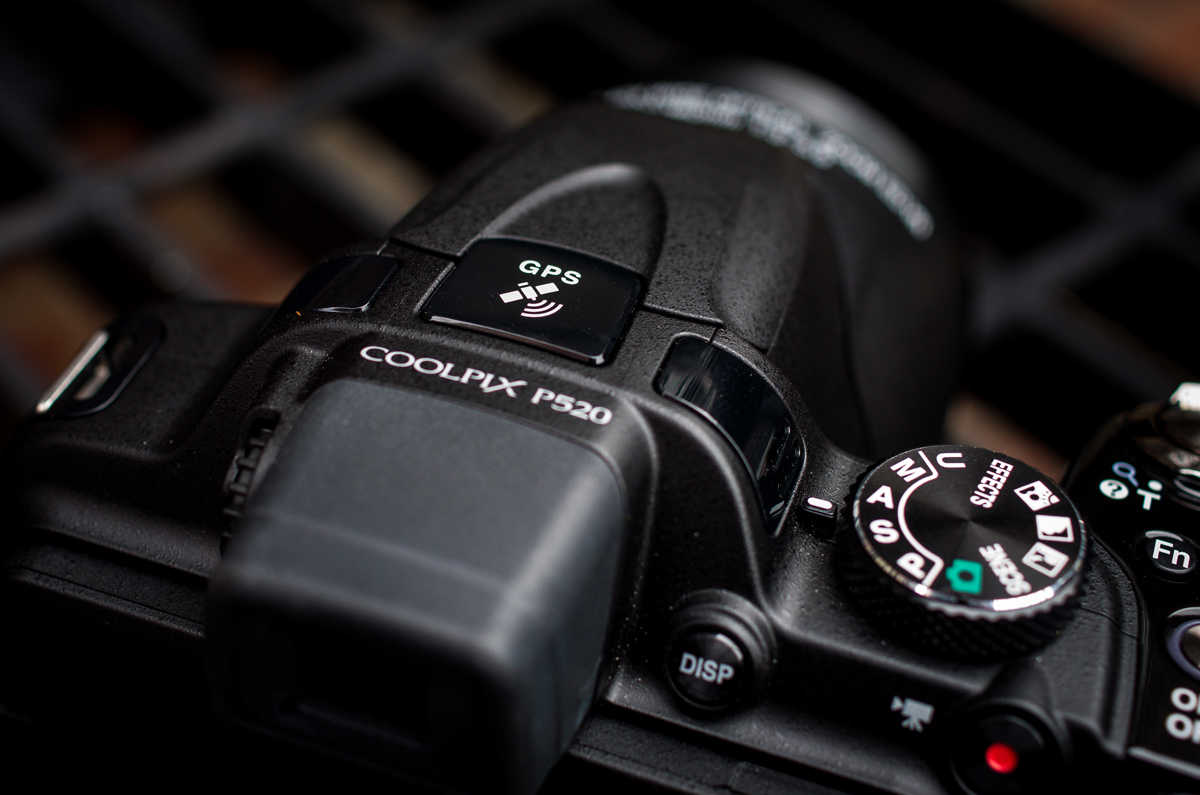Reviewed.com: Nikon's P520 camera handles video well
While we have no doubt that we'll see 60x and probably even 70x designs in the future, Nikon has apparently decided (at least for the moment) that length isn't everything. The new Coolpix P520 (MSRP $449.95) retains the same 42x zoom of its predecessor but ups the sensor resolution, puts a fully articulating hinge on the 3.2-inch LCD, and makes a few less notable tweaks.
Sounds like a pretty minor update, right? That's because it is—Nikon isn't doing anything revolutionary here. But the fact is, we really liked the P510, and to be frank we'd be pretty happy with some small improvements to image quality and usability. So we put the new model through its paces in our labs and some real-world shooting scenarios (including a trip to the Australian V8 Supercars race in Austin, Texas) to find out if it can improve on what's come before.
 The P520's massive zoom range allows you to zero in on details you'd otherwise never notice.
The P520's massive zoom range allows you to zero in on details you'd otherwise never notice.
That articulating screen is easily the P520's biggest improvement. Big, bright, and crisp (921k-dot), it stands in stark contrast to the incredibly disappointing electronic viewfinder—a direct carryover from the P510. The EVF is tiny (0.5cm), extremely low-resolution (201k-dot), and its frame rate lags quite a bit even in bright light.
 We absolutely loved the aggressively textured rubber material used on the P520's front grip.
We absolutely loved the aggressively textured rubber material used on the P520's front grip.That shortcoming will matter to enthusiasts, but the average user will probably just pop the camera into Auto, Program, or Aperture Priority modes and snap away. When I took the P520 to the races, I didn't have any trouble getting in sync with its control scheme. I typically shoot with Auto ISO and aperture priority mode, and the P520 worked beautifully in that configuration—at least in bright light. Paired with the camera's excellent optical vibration reduction, the 1000mm of telephoto reach let me get some shots that would have required untold thousands of dollars to get with a DSLR.
(One note about the P520's VR, though: When shooting at full telephoto with vibration reduction on, you may find that what you see on the screen isn't what you get when you press the shutter release. That's because the optical stabilization is so aggressive at 1000mm that it corrects a bit between when you frame the shot and when you pull the trigger.)
Stills Performance Nikon's investment in a new sensor pays only small dividends. Nikon claims that the P520 "performs so well in low light situations that, in most cases, using the flash is optional." That's a stretch, to put it charitably.But that's not to say my race snaps will rival what the pros captured that day. Far from it. Internally, the P520's biggest upgrade is its new 18.1-megapixel sensor. Unfortunately, like its 16-megapixel predecessor, it's still a tiny 1/2.3-inch chip—among the smallest used in compact cameras today. Since a smaller sensor collects less light, cameras using 1/2.3-inch units tend to have more trouble shooting in dim situations. In theory, the P520's backside-illuminated chip should help correct this shortcoming, but past experience didn't have us hopeful; last year's P510 also used a BSI sensor and we found it to be a poor performer at its highest sensitivities. In marketing materials, Nikon claims that the P520 "performs so well in low light situations that, in most cases, using the flash is optional." That's a stretch, to put it charitably. Despite using the same size of sensor, the Canon SX50 HS clearly outperforms the Nikon P520 at the highest ISO settings.
Sure, up to ISO 800, shots from the P520 are reasonably crisp and clear. But image quality declines significantly at ISO 1600 and takes a more serious dive at ISO 3200 and 6400, which you'll need to use in order to stop motion in dim light. Complicating matters, autofocus performance suffers terribly in low light. It will likely either hunt for a few seconds before finding a lock, or give up altogether. This behavior is predictably exacerbated when using the long end of the zoom.
Noise aside, the P520 did produce a couple small image quality improvements. Color accuracy remains roughly the same, but automatic white balance has improved quite a bit. It's still not good—especially in artificial light—but it's definitely less bad. Dynamic range is right on par with the competition; the camera was even able to eke out the smallest of advantages over the class-leading Canon SX50 HS in our lab test.
For an in-depth discussion of the P520's performance, visit the Science page[5].
Video Performance
Video is surprisingly smooth and sharp in the top 1080/30p mode.
While Nikon hasn't made a quantum leap with the P520's stills, its video functionality has certainly matured. Though the camera is limited to 1080/30p (or 60i), motion is quite fluid and we couldn't find any evidence of artifacting in good light. Video sharpness is drastically improved over the P510—even the smallest text in our still life was perfectly legible. The P520 records to .MOV files using the H.264/MPEG-4 codec, a format that's easy to edit using all kinds of readily available software.
At the Circuit of the Americas, I was able to track the pack of Aussie V8s through nearly half of the course's 20 corners thanks to the P520's huge zoom range. The video won't win me any Oscars; even with the camera's remarkable VR, my hands aren't steady enough to prevent jerky panning. But it's a document of a moment that most cameras couldn't capture. Check it out below.
One flaw I did notice is that if you zoom during recording, the video will briefly jump out of focus. We're not sure if this is due to a varifocal lens design[6] or some software shortcoming, but I missed a few dramatic moments of car-to-car contact as a result.
Despite using the same size of sensor, the Canon SX50 HS clearly outperforms the Nikon P520 at the highest ISO settings.
Sure, up to ISO 800, shots from the P520 are reasonably crisp and clear. But image quality declines significantly at ISO 1600 and takes a more serious dive at ISO 3200 and 6400, which you'll need to use in order to stop motion in dim light. Complicating matters, autofocus performance suffers terribly in low light. It will likely either hunt for a few seconds before finding a lock, or give up altogether. This behavior is predictably exacerbated when using the long end of the zoom.
Noise aside, the P520 did produce a couple small image quality improvements. Color accuracy remains roughly the same, but automatic white balance has improved quite a bit. It's still not good—especially in artificial light—but it's definitely less bad. Dynamic range is right on par with the competition; the camera was even able to eke out the smallest of advantages over the class-leading Canon SX50 HS in our lab test.
For an in-depth discussion of the P520's performance, visit the Science page[5].
Video Performance
Video is surprisingly smooth and sharp in the top 1080/30p mode.
While Nikon hasn't made a quantum leap with the P520's stills, its video functionality has certainly matured. Though the camera is limited to 1080/30p (or 60i), motion is quite fluid and we couldn't find any evidence of artifacting in good light. Video sharpness is drastically improved over the P510—even the smallest text in our still life was perfectly legible. The P520 records to .MOV files using the H.264/MPEG-4 codec, a format that's easy to edit using all kinds of readily available software.
At the Circuit of the Americas, I was able to track the pack of Aussie V8s through nearly half of the course's 20 corners thanks to the P520's huge zoom range. The video won't win me any Oscars; even with the camera's remarkable VR, my hands aren't steady enough to prevent jerky panning. But it's a document of a moment that most cameras couldn't capture. Check it out below.
One flaw I did notice is that if you zoom during recording, the video will briefly jump out of focus. We're not sure if this is due to a varifocal lens design[6] or some software shortcoming, but I missed a few dramatic moments of car-to-car contact as a result.
As you'd imagine given the P520's stills performance, in poor light videos aren't quite as impressive: image noise becomes a serious problem, sharpness drops substantially, and colors quickly get distorted.
Features The 42x zoom is the star, but that's not the only trick the P520 has up its lens barrel. Like any other consumer camera worth its salt, the P520 is loaded with some interesting and occasionally useful digital effects. They've even got their own spot on the DSLR-style mode dial. Our favorite (as is often the case) was the high-contrast monochrome mode, which produces extremely striking black-and-white shots in most cases. Cross-processing, high- and low-key, and selective color modes will probably also find some fans. We weren't able to get the GPS function to work for us in the city, but those in rural areas might have more success.There are also not one but two different panorama modes. Easy panorama automates the entire process for you, meaning you just have to hold down the shutter and pan, while panorama assist mode is more precise but requires you to manually line up your shots. Like Nikon's own 1-series cameras, the P520 has a mess of slow-motion and high-speed modes. None is quite as dramatic as the 1200 fps slow-motion mode from the Nikon 1 J3 and 1 V2, but some are higher-quality. You can record half-speed (60 fps) videos at 720p, quarter-speed (120 fps) clips at 480p, and double-time (15 fps) movies at 1080p. They're pretty neat party tricks, but we doubt the average user will try them more than a couple times.
GPS was featured on the P510, and Nikon hasn't given up on it with the P520. We should say up front that we never got the function to work for us—at least not in the concrete canyons of Boston. Those living in more sparsely populated areas may find it more useful. Nikon has improved the functionality a little, adding points of interest to the basic latitude and longitude coordinates, and the data can be used to create photo journals via Google+, Google Earth, and Nikon's own View NX2 software. We're not sure many will bother, though.
Conclusion
A retread of a good camera is still a good camera, but Nikon is standing still in a market moving ever forward.
While it didn't fare very well in low light, we're still impressed with the Nikon P520 on the whole. Just as impressed, in fact, as we were with the earlier P510. For habitual bright-light shooters—the sort who spend their weekends shooting t-ball games and soccer practices—the P520 is an extremely capable camera that can capture shots few other cameras in its price range can manage.
We weren't able to get the GPS function to work for us in the city, but those in rural areas might have more success.There are also not one but two different panorama modes. Easy panorama automates the entire process for you, meaning you just have to hold down the shutter and pan, while panorama assist mode is more precise but requires you to manually line up your shots. Like Nikon's own 1-series cameras, the P520 has a mess of slow-motion and high-speed modes. None is quite as dramatic as the 1200 fps slow-motion mode from the Nikon 1 J3 and 1 V2, but some are higher-quality. You can record half-speed (60 fps) videos at 720p, quarter-speed (120 fps) clips at 480p, and double-time (15 fps) movies at 1080p. They're pretty neat party tricks, but we doubt the average user will try them more than a couple times.
GPS was featured on the P510, and Nikon hasn't given up on it with the P520. We should say up front that we never got the function to work for us—at least not in the concrete canyons of Boston. Those living in more sparsely populated areas may find it more useful. Nikon has improved the functionality a little, adding points of interest to the basic latitude and longitude coordinates, and the data can be used to create photo journals via Google+, Google Earth, and Nikon's own View NX2 software. We're not sure many will bother, though.
Conclusion
A retread of a good camera is still a good camera, but Nikon is standing still in a market moving ever forward.
While it didn't fare very well in low light, we're still impressed with the Nikon P520 on the whole. Just as impressed, in fact, as we were with the earlier P510. For habitual bright-light shooters—the sort who spend their weekends shooting t-ball games and soccer practices—the P520 is an extremely capable camera that can capture shots few other cameras in its price range can manage.
 In particular, I was impressed with the P520's effective vibration reduction and crisp, clear video. At the race track, the massive 42x zoom range made all the difference in the world, letting me get up close to the sheet metal–crushing action without risking life and limb. You won't mistake my shots for DSLR output, but for most purposes (even small prints) they're perfectly fine. Similarly, the videos show clear evidence of my shaky hands, but given the massive 1000mm focal length it's surprisingly watchable—all credit to Nikon's VR wizardry.
The real problem for Nikon is that Canon's SX50 HS is currently being offered at exactly the same price. (Current street prices actually favor the Canon by a small margin.) Nikon undoubtedly has the better LCD, the better grip, and the better video quality. But—and this is a big, big but—the SX50 has the bigger zoom ratio and produces more appealing still images straight out of the camera.
Those who already own a P510 have very little reason to upgrade unless video is an overriding concern. The lens is the same and the new sensor leads to very few image quality gains, at least when it comes to stills. If you are looking to upgrade, you'd do better to wait for Nikon's inevitable 50x or 60x response.
In particular, I was impressed with the P520's effective vibration reduction and crisp, clear video. At the race track, the massive 42x zoom range made all the difference in the world, letting me get up close to the sheet metal–crushing action without risking life and limb. You won't mistake my shots for DSLR output, but for most purposes (even small prints) they're perfectly fine. Similarly, the videos show clear evidence of my shaky hands, but given the massive 1000mm focal length it's surprisingly watchable—all credit to Nikon's VR wizardry.
The real problem for Nikon is that Canon's SX50 HS is currently being offered at exactly the same price. (Current street prices actually favor the Canon by a small margin.) Nikon undoubtedly has the better LCD, the better grip, and the better video quality. But—and this is a big, big but—the SX50 has the bigger zoom ratio and produces more appealing still images straight out of the camera.
Those who already own a P510 have very little reason to upgrade unless video is an overriding concern. The lens is the same and the new sensor leads to very few image quality gains, at least when it comes to stills. If you are looking to upgrade, you'd do better to wait for Nikon's inevitable 50x or 60x response.
 Ben is an experienced industry journalist, now covering cameras and camcorders for Reviewed.com. Most recently hailing from the vast wilds of the American southwest, he is an avid photographer who is deeply disturbed by the lack of wide open landscapes in Boston.
References^ Coolpix P510 (www.digitalcamerainfo.com)^ SX50 HS (www.digitalcamerainfo.com)^ Fuji's FinePix SL1000 (www.digitalcamerainfo.com)^ D5200 DSLR (www.digitalcamerainfo.com)^ the Science page (rssfeeds.usatoday.com)^ varifocal lens design (en.wikipedia.org)
Ben is an experienced industry journalist, now covering cameras and camcorders for Reviewed.com. Most recently hailing from the vast wilds of the American southwest, he is an avid photographer who is deeply disturbed by the lack of wide open landscapes in Boston.
References^ Coolpix P510 (www.digitalcamerainfo.com)^ SX50 HS (www.digitalcamerainfo.com)^ Fuji's FinePix SL1000 (www.digitalcamerainfo.com)^ D5200 DSLR (www.digitalcamerainfo.com)^ the Science page (rssfeeds.usatoday.com)^ varifocal lens design (en.wikipedia.org) 































